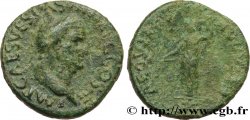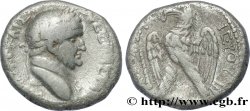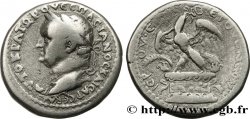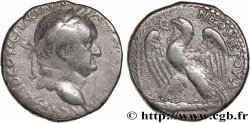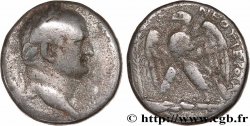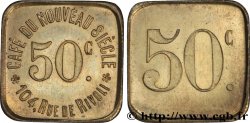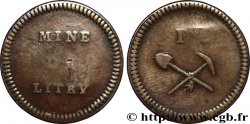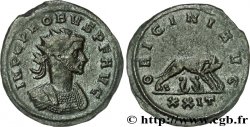E-auction 164-100523 - bpv_141593 - VESPASIANUS Tétradrachme syro-phénicien
Чтобы принять участие в торгах, вы должны войти в систему и стать подтвержденным участником аукциона. Войдите, чтобы сделать ставку. Ваш аккаунт будет подтвержден в течение 48 часов. Не ждите до закрытия торгов, чтобы зарегистрироваться.Сделав ставку на данный товар, вы вступаете в юридическое соглашение на покупку выбранного товара и нажатием кнопки «Сделать ставку» подтверждаете принятие вами условий интернет-аукционов cgb.fr.
Ставка может бить сделана только в полном эквиваленте евро. Торги закроются согласно времени, указанному в описании товара, все ставки, сделанные после закрытия торгов, учитываться не будут. Не следует откладывать предложение вашей ставки до последнего момента, так как система может не успеть обработать вашу заявку, и ваша ставка не будет принята. Более детальную информацию вы найдёте здесь: FAQ по интернет-аукционам.
БЕСПЛАТНО.
БЕСПЛАТНО.
| Оценить : | 280 € |
| Цена : | 106 € |
| Максимальная предлагаемая цена : | 218 € |
| Конец торгов : | 06 June 2016 15:13:00 |
| Участников : | 5 Участников |
Тип Tétradrachme syro-phénicien
Дата: an 2
Монетный двор / Город: Antioche, Syrie, Séleucie et Piérie
Металл: silver
Диаметр: 26 mm
Ориентация осей монеты: 11 h.
Вес: 14,53 g.
Редкость: R2
Комментарии о состоянии
Léger décentrage qui oblitère la fin de la légende de droit, léger tréflage au revers, usure régulière de circulation
Ссылки в каталоге: :
Происхождение:
Cet exemplaire est le 0105_009 de la base TSP, il provient de la trouvaille dite de Cisjordanie
Лицевая сторона
Аверс: описание: Tête laurée de Vespasien à droite (O1).
Аверс: легенда: AUTOKRAT KAISA OUESPASIANOU
Аверс: перевод: (L'empereur césar Vespasien).
Обратная сторона
Реверс: Описание: Aigle, ailes écartées, à droite sur un foudre, palme verticale dans le champ droit.
Реверс: легенда: ETOUS NEOU IEROU B
Реверс: перевод: (Nouvelle année sainte An 2).
Комментарий
Curieusement, ce qui se rapproche le plus de ces émissions du premier groupe de Vespasien, fort rare, caractérisé par un aigle sur foudre à droite, ce sont aussi bien les émissions du milieu du règne de Néron (Prieur 84 à 89), de dix ans antérieures, que les premières émissions du règne de Domitien. (Prieur 143). Faut-il en déduire qu’il était politique à Antioche, pour un nouvel empereur du premier siècle, de rappeler le souvenir de ces frappes de Néron ?
Ce premier groupe, placé là d’une manière arbitraire (il comporte les années A et B, mais comme les groupes 5, 6 et 9), n’a aucun rapport avec les émissions de Galba et d’Othon : faut-il en déduire qu’il n’a pas été frappé à Antioche ou que les frappes de ceux-ci émanent d’une autre ville ? La question reste encore posée. On remarque par ailleurs que les aigles de ce groupe ne portent pas la couronne dans le bec, probablement une distinction accordée à la ville émettrice.
Le premier groupe se termine en l’an 2, numériquement, c’est l’un des plus réduits de l’ample production liée à la guerre Juive. Cette variante à buste nu manque aux Cabinets des Médailles de Paris et de Londres.
Les sigma sont traités en C.
Dans la base TSP maintenue par Michel Prieur, quatorze exemplaires seulement sont maintenant répertorié, dont seulement trois en musées Berlin, Fitzwilliam Museum Mc Lean Collection et Vienne.
Curiously, what comes closest to these issues of the first group of Vespasian, very rare, characterized by an eagle on a thunderbolt on the right, are both the issues from the middle of the reign of Nero (Prior 84 to 89), from ten years earlier, and the first issues of the reign of Domitian.. (Prior 143). Should we deduce from this that it was political in Antioch, for a new emperor of the first century, to recall the memory of these strikes of Nero? This first group, placed there arbitrarily (it includes years A and B, but like groups 5, 6 and 9), has no connection with the issues of Galba and Otho: should we deduce from this that it was not struck in Antioch or that the strikes of these emanate from another city? The question still remains.. It is also noted that the eagles in this group do not wear the crown in their beaks, probably a distinction granted to the issuing city..
The first group ends in the year 2, numerically, it is one of the smallest of the large production linked to the Jewish War. This bare-bust variant is missing from the Cabinets of Medals in Paris and London.
Sigmas are treated in C.
In the TSP database maintained by Michel Prieur, only fourteen examples are now listed, including only three in museums: Berlin, Fitzwilliam Museum Mc Lean Collection and Vienna.
Ce premier groupe, placé là d’une manière arbitraire (il comporte les années A et B, mais comme les groupes 5, 6 et 9), n’a aucun rapport avec les émissions de Galba et d’Othon : faut-il en déduire qu’il n’a pas été frappé à Antioche ou que les frappes de ceux-ci émanent d’une autre ville ? La question reste encore posée. On remarque par ailleurs que les aigles de ce groupe ne portent pas la couronne dans le bec, probablement une distinction accordée à la ville émettrice.
Le premier groupe se termine en l’an 2, numériquement, c’est l’un des plus réduits de l’ample production liée à la guerre Juive. Cette variante à buste nu manque aux Cabinets des Médailles de Paris et de Londres.
Les sigma sont traités en C.
Dans la base TSP maintenue par Michel Prieur, quatorze exemplaires seulement sont maintenant répertorié, dont seulement trois en musées Berlin, Fitzwilliam Museum Mc Lean Collection et Vienne.
Curiously, what comes closest to these issues of the first group of Vespasian, very rare, characterized by an eagle on a thunderbolt on the right, are both the issues from the middle of the reign of Nero (Prior 84 to 89), from ten years earlier, and the first issues of the reign of Domitian.. (Prior 143). Should we deduce from this that it was political in Antioch, for a new emperor of the first century, to recall the memory of these strikes of Nero? This first group, placed there arbitrarily (it includes years A and B, but like groups 5, 6 and 9), has no connection with the issues of Galba and Otho: should we deduce from this that it was not struck in Antioch or that the strikes of these emanate from another city? The question still remains.. It is also noted that the eagles in this group do not wear the crown in their beaks, probably a distinction granted to the issuing city..
The first group ends in the year 2, numerically, it is one of the smallest of the large production linked to the Jewish War. This bare-bust variant is missing from the Cabinets of Medals in Paris and London.
Sigmas are treated in C.
In the TSP database maintained by Michel Prieur, only fourteen examples are now listed, including only three in museums: Berlin, Fitzwilliam Museum Mc Lean Collection and Vienna.







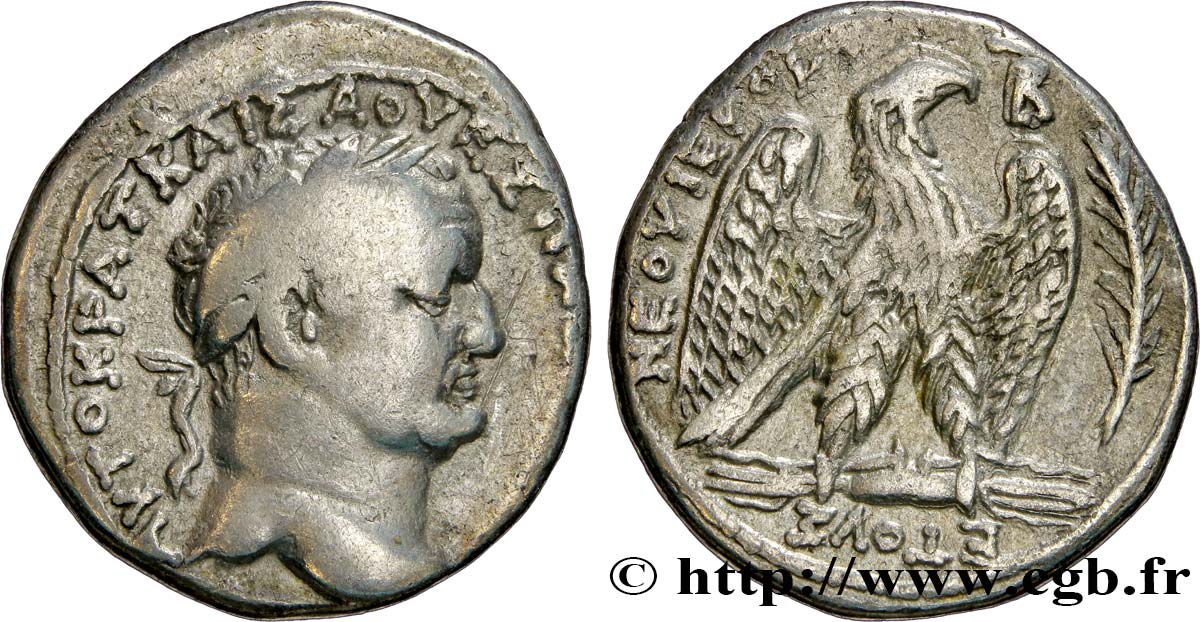
 Cообщить об ошибке
Cообщить об ошибке Распечатать страницу
Распечатать страницу Отправить мой выбор
Отправить мой выбор Задать вопрос
Задать вопрос Consign / sell
Consign / sell
 Информация
Информация